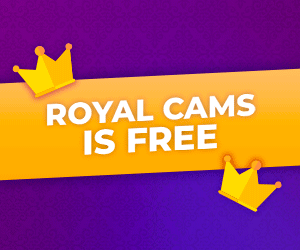The freelance revolution has entered its next phase—no longer just a side hustle economy but the backbone of how skilled work gets done globally. As businesses and solopreneurs alike navigate this shifting landscape, the choice between Fiverr and Upwork in 2025 comes down to more than just fees and features. It’s about aligning with a platform whose DNA matches your working rhythm, whether you’re a startup founder needing lightning-fast turnarounds or an enterprise looking for embedded talent.
Fiverr’s evolution from a $5 gig marketplace to a sophisticated project hub has been nothing short of remarkable. The platform now operates like a digital bazaar where specialized skills come pre-packaged with clear deliverables and timelines. A mobile app developer in Berlin described ordering a same-day UI refresh from a Fiverr Pro designer—the entire transaction from brief to delivery happened in under eight hours, with the designer pulling an all-nighter to meet the deadline. This is Fiverr’s sweet spot: standardized creative and technical services where speed and predictability trump customization. The platform’s AI-powered project brief generator has become eerily accurate at translating vague client requests into actionable scopes, reducing the back-and-forth that once plagued digital outsourcing.
Upwork’s approach feels more like walking into a high-end consultancy than a marketplace. The platform’s 2025 enhancements focus on deep, ongoing collaborations—think fractional CMOs managing marketing strategy or embedded DevOps engineers maintaining infrastructure. A Silicon Valley startup CEO credits her company’s survival to an Upwork-hired CFO who worked 15 hours weekly for six months, restructuring their burn rate without the six-figure salary commitment. Upwork’s new “Team Suite” feature allows businesses to build entire departments through the platform, with freelancers gaining access to internal systems and participating in company standups. This isn’t gig work; it’s workforce fluidity at its most sophisticated.
Pricing structures now tell divergent stories. Fiverr’s 2025 model favors transactional relationships—you pay per project or milestone with transparent pricing tiers (Basic, Standard, Premium). Their “Fiverr Neo” service uses machine learning to suggest optimal service levels based on your business size and needs. A bakery owner needing packaging design could select the $299 “Starter” package knowing it includes three concepts and two revisions, with no surprises. Upwork’s value proposition leans toward complex engagements—their revised sliding fee scale (5%-20% based on lifetime client spend) incentivizes long-term relationships. An e-commerce brand paying $15k/month to their Upwork supply chain manager enjoys the platform’s lowest service fee tier while benefiting from what essentially functions as a permanent remote employee.
Talent discovery reveals philosophical differences. Fiverr’s algorithm prioritizes sellers who deliver consistent quality at volume—their “Fiverr Choice” badges now incorporate real-time client satisfaction metrics from similar-sized businesses. You’re not just hiring a copywriter; you’re getting one whose work resonates specifically with mid-market SaaS companies or direct-to-consumer brands. Upwork’s 2025 talent matching goes deeper, analyzing project histories to suggest freelancers who’ve solved analogous challenges. A health tech founder searching for regulatory compliance help automatically sees candidates who’ve navigated FDA approvals for similar devices, with AI highlighting relevant project snippets in their portfolios.
Project management tools reflect each platform’s ethos. Fiverr’s interface keeps things simple—built-in file sharing, revision requests, and a progress tracker that clients describe as “Uber-like” in its clarity. Their new “Fiverr Workspace” allows basic task coordination without overwhelming users with features. Upwork’s overhauled dashboard competes head-on with Asana and ClickUp, offering Gantt charts, dependency mapping, and integrated time tracking that freelancers can’t fake (their “Truthful Time” tool uses periodic screenshots and activity monitoring). An agency owner managing twelve Upwork freelancers across three continents praised the platform’s capacity planning view—it shows which team members are approaching burnout based on workload patterns.
Quality control has taken divergent paths. Fiverr’s “Pro Verified” program now includes secret shopper audits—sellers don’t know which orders are platform evaluations until after delivery. Their dispute resolution leverages blockchain technology to create immutable records of project requirements and deliverables. Upwork’s 2025 “Talent Passport” system goes further, with freelancers submitting to biannual skills testing, peer reviews, and even client-facing performance dashboards showing metrics like on-time delivery rates and revision frequencies. A Fortune 500 procurement manager noted they now require all external creatives to maintain an 85%+ Upwork “Reliability Score” for consideration.
Niche domination is becoming pronounced. Fiverr owns the creative quick-turnaround space—logo animations, explainer videos, and social media packs dominate their trending services. Their new “Fiverr Studios” feature lets clients book entire production teams (writer + designer + voice actor) as bundled offerings. Upwork has solidified its hold on complex technical and strategic work, with enterprise-grade cybersecurity, machine learning, and interim executive roles filling their premium talent pool. A striking development: Upwork now facilitates equity-based compensation for long-term freelancers through their “Partner Track” program, blurring the line between contractor and co-founder.
Mobile experiences reveal unexpected strengths. Fiverr’s app operates with the slick efficiency of a consumer shopping platform—one-tap reorders of frequently used services, AR previews for design work, and instant messaging that feels more WhatsApp than business tool. Upwork’s mobile offering has pivoted toward virtual office functionality, with integrated video calling, collaborative whiteboarding, and even a “Focus Mode” that helps distributed teams maintain synchronous work hours across time zones.
The payment landscape shows stark contrasts. Fiverr’s “Pay As You Go” model works like a corporate credit card for services—pre-approved spending limits, instant payment releases upon delivery approval, and detailed expense categorization. Upwork’s “Smart Billing” functions more like a payroll system, handling international tax compliance, benefits contributions for eligible freelancers, and even 401(k) integrations for U.S. workers. Their new “Escrow Plus” service holds funds in interest-bearing accounts during lengthy projects, with clients and freelancers sharing the accrued interest—a clever peace-of-mind feature for six-figure engagements.
Reputation systems have evolved beyond simple reviews. Fiverr’s “Skill DNA” profiling breaks seller capabilities into granular competencies—a graphic designer’s profile might show 92/100 for typography but 78/100 for 3D modeling, based on client ratings across specific project elements. Upwork’s “Impact Scoring” measures freelancers’ contributions to business outcomes—a data scientist might display metrics like “average 18% revenue lift for e-commerce clients” or “typical 30-day implementation timeline for recommendation engines.”
The choice between platforms increasingly mirrors business philosophies. Fiverr suits those who view talent as on-demand utilities—reliable, standardized, and interchangeable. Their 2025 “Instant Team” feature lets clients save preferred seller combinations (developer + QA tester + technical writer) for one-click reassembly on new projects. Upwork appeals to builders of virtual organizations—their “Talent Cloud” system helps freelancers form persistent teams that move together between client engagements, complete with shared workspaces and cross-trained skillsets.
Emerging industries are taking sides. Web3 startups overwhelmingly favor Fiverr for smart contract development and NFT art—the platform’s crypto payment options and blockchain-native dispute resolution resonate with this audience. Biotech and hardware companies lean toward Upwork, where stringent NDAs and IP protection measures meet FDA/ISO compliance-experienced talent. A medical device engineer noted Upwork’s new “Clean Room” virtual workspaces—isolated environments with enhanced security for sensitive R&D collaborations.
Perhaps the most telling differentiator lies in how each platform handles failure. Fiverr’s “Next Gen Guarantee” automatically connects clients with replacement sellers if deliverables miss the mark, plus a 24-hour emergency support line for mission-critical projects. Upwork invests heavily in prevention—their “Success Partnership” program assigns dedicated managers to high-value contracts, conducting weekly check-ins and risk assessments. A fintech CEO credits her Upwork manager with spotting a looming deadline disaster two weeks early, allowing time to onboard supplemental developers.
The human element persists despite technological advances. Fiverr relationships often feel like patronizing skilled artisans—brief but satisfying transactions with masters of their craft. Upwork engagements resemble hiring colleagues—the platform’s new “Virtual Coffee Chat” feature randomly matches compatible freelancers and clients for non-project conversations, fostering the serendipity of office hallway encounters.
As hybrid work becomes the enduring norm, these platforms aren’t just facilitating freelancing—they’re defining new organizational structures. Fiverr excels as the extension cord for businesses needing quick power boosts. Upwork operates more like a renewable energy grid—complex to set up but capable of sustaining entire operations. The 2025 decision comes down to whether you need a Swiss Army knife or a machine shop—both invaluable, but for fundamentally different kinds of work.
What began as a simple choice between two websites has matured into a strategic decision about how your business interfaces with the global talent pool. The platforms have grown so distinct that many successful teams now use both—Fiverr for the creative sprints, Upwork for the marathons of technical execution. This bifurcation suggests the future of work isn’t homogenized but delightfully specialized—with each platform carving out territory that plays to its unique strengths in serving the evolving needs of the digital workforce.







